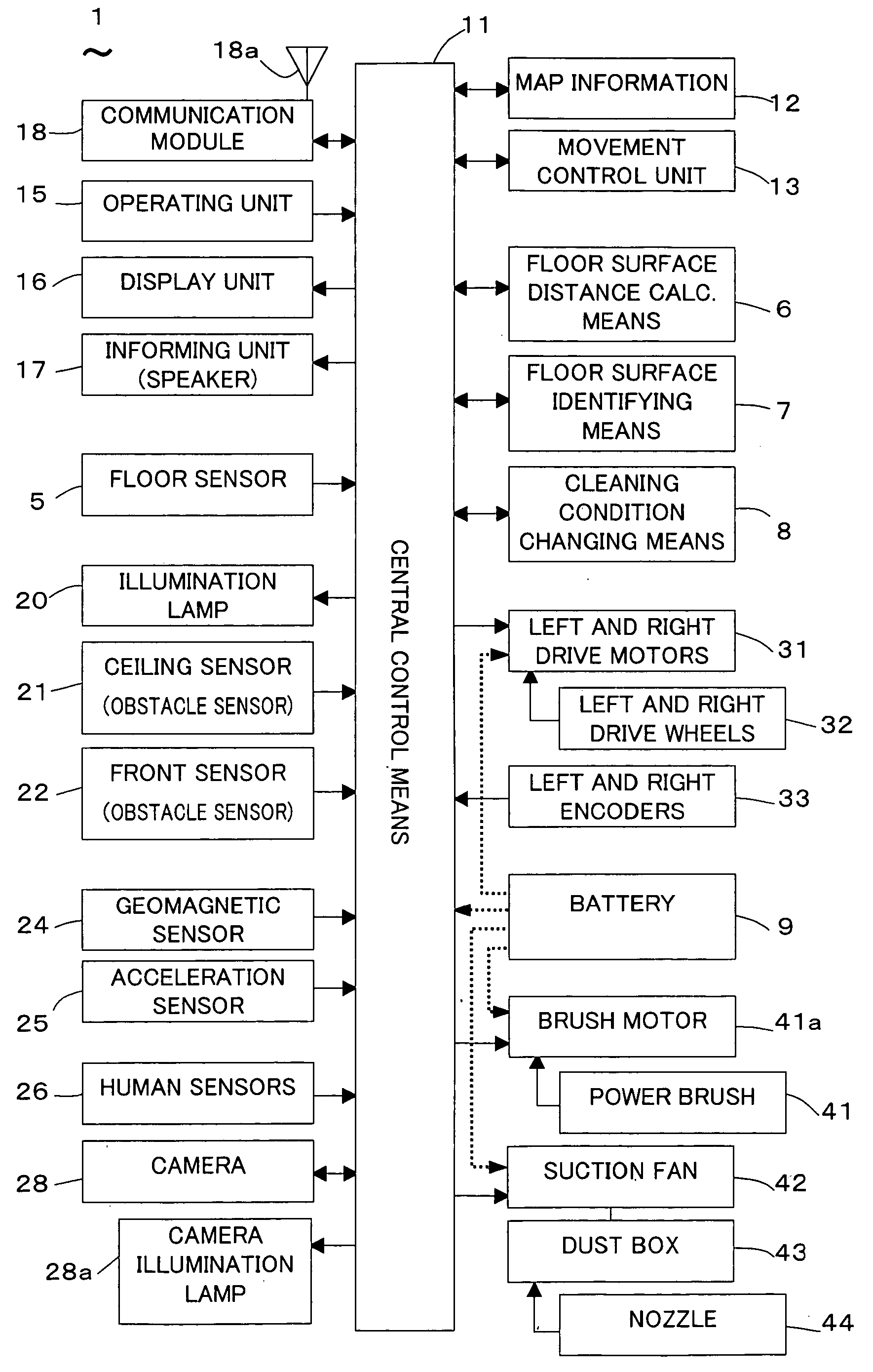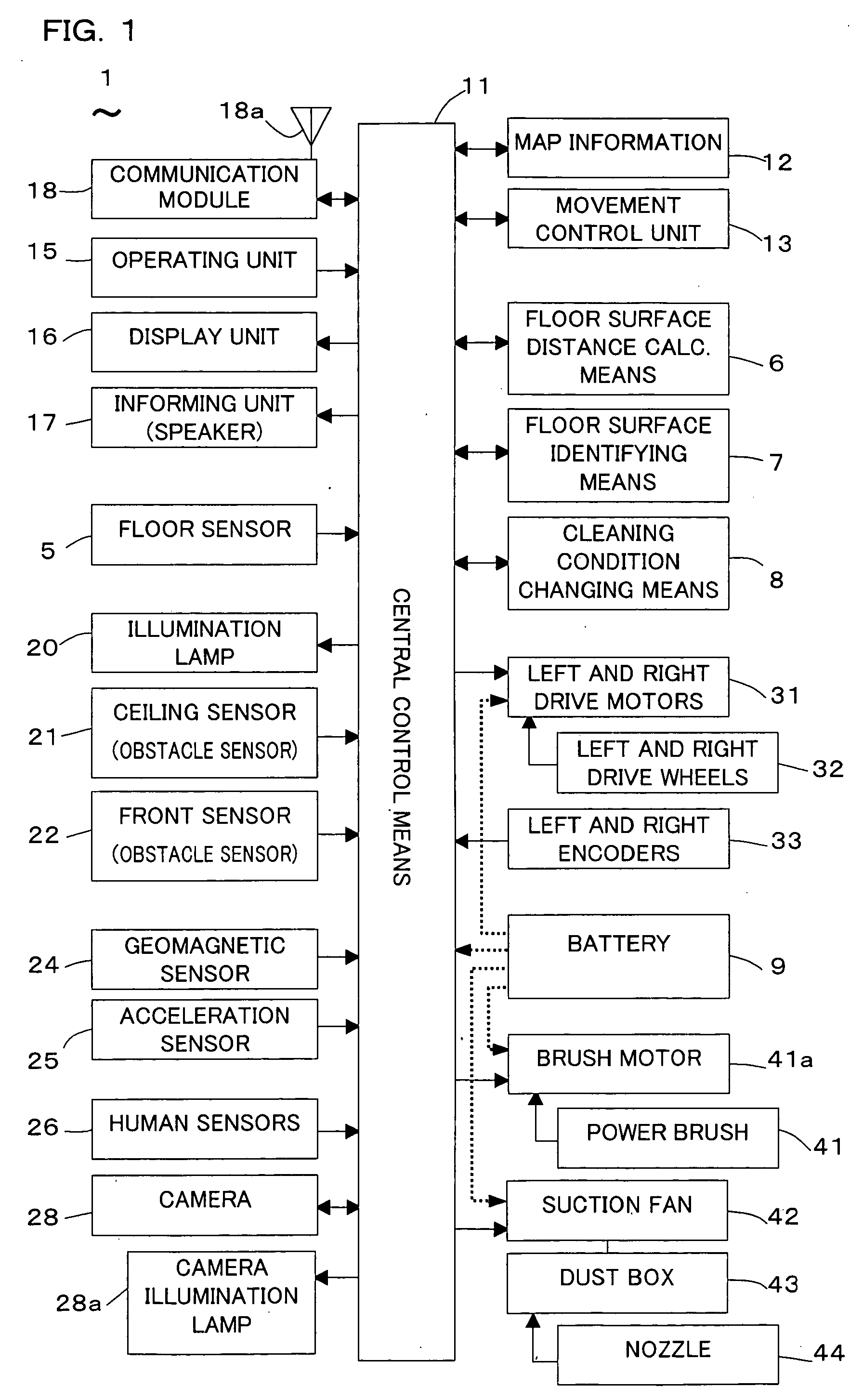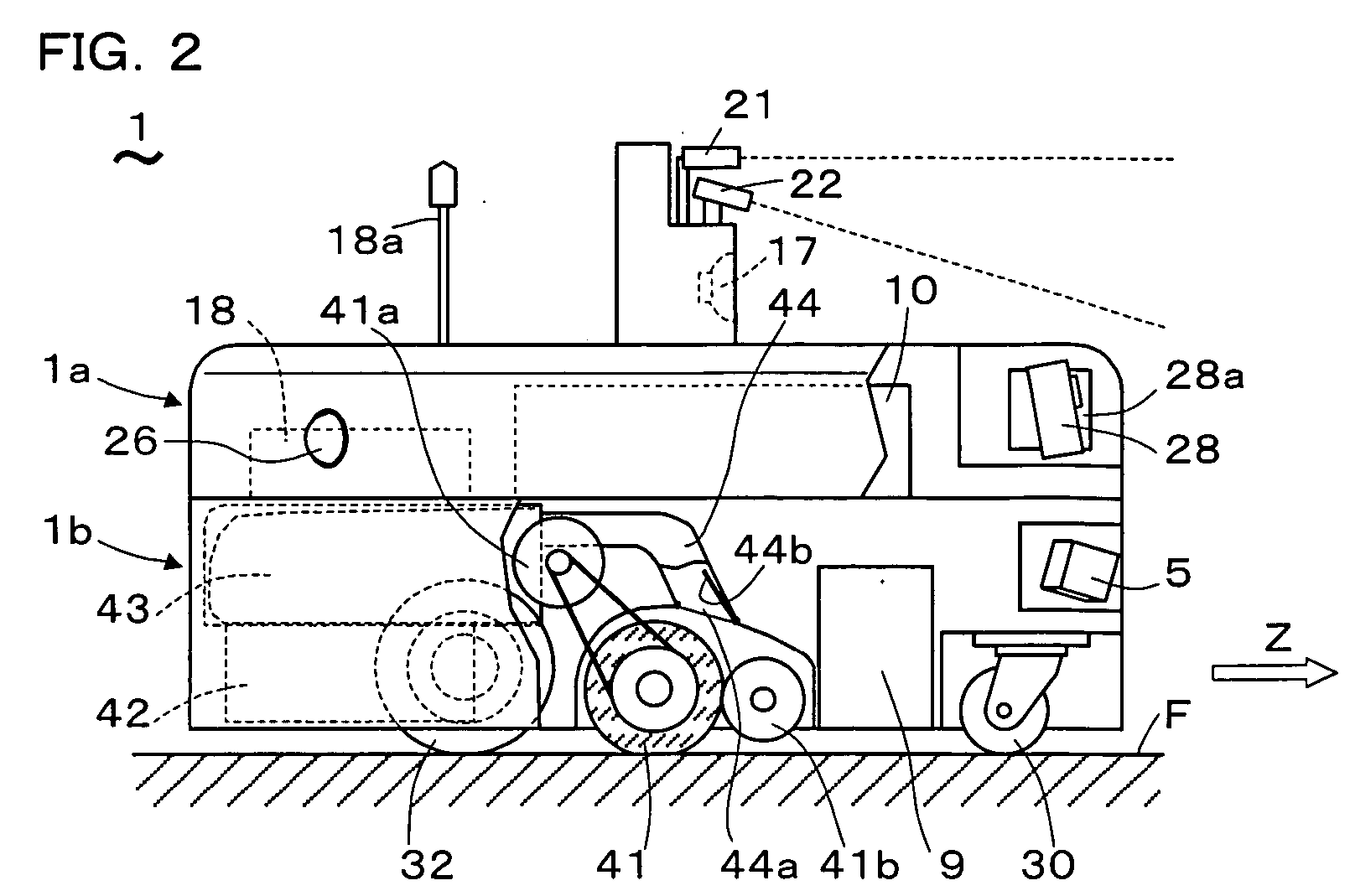Autonomous vacuum cleaner
a vacuum cleaner and autonomous technology, applied in the direction of cleaning action control, process and machine control, instruments, etc., can solve the problem of not being able to accurately identify the material or type of the floor surface, and achieve the effect of accurate identification of the material of the floor surface and meticulous cleaning
- Summary
- Abstract
- Description
- Claims
- Application Information
AI Technical Summary
Benefits of technology
Problems solved by technology
Method used
Image
Examples
Embodiment Construction
[0041] An autonomous vacuum cleaner according to an embodiment of the present invention will be described hereinafter with reference to the annexed drawings. FIG. 1 shows an electrical block diagram of an autonomous vacuum cleaner 1 according to the present embodiment. FIG. 2 shows a partially cutaway side view of the autonomous vacuum cleaner 1. FIG. 3A and FIG. 3B show an upper part and a lower part of the autonomous vacuum cleaner 1, respectively, as separated.
[0042] As shown in FIG. 3A and FIG. 3B, the autonomous vacuum cleaner 1 is a three-wheeled vehicle having an outer shape formed of two disk-shaped parts, namely a cleaner-upper-part 1a and a cleaner-lower-part 1b, stacked vertically on each other. The cleaner-upper-part 1a comprises mainly various sensors and control devices, while the cleaner-lower-part 1b comprises a moving means and a cleaning means. In the following, the autonomous vacuum cleaner 1 will be described by referring mainly to the electrical block diagram o...
PUM
 Login to View More
Login to View More Abstract
Description
Claims
Application Information
 Login to View More
Login to View More - R&D
- Intellectual Property
- Life Sciences
- Materials
- Tech Scout
- Unparalleled Data Quality
- Higher Quality Content
- 60% Fewer Hallucinations
Browse by: Latest US Patents, China's latest patents, Technical Efficacy Thesaurus, Application Domain, Technology Topic, Popular Technical Reports.
© 2025 PatSnap. All rights reserved.Legal|Privacy policy|Modern Slavery Act Transparency Statement|Sitemap|About US| Contact US: help@patsnap.com



